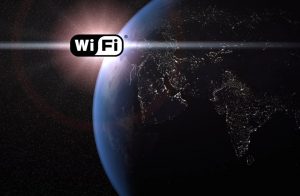Stephouse Networks is different from other Internet service providers (ISPs) in a lot of ways – we’re locally owned and operated, we don’t do contracts, and don’t have data caps among other differences – but what usually catches peoples’ attention the most is the technology we use. Stephouse is a wireless Internet service provider, which works a little differently than many other ISPs.
Here are a few questions that we frequently hear:
“Does Stephouse Networks provide DSL service? (No.)”
“Do you use cellular equipment? (No.)” or,
“What’s the difference between Stephouse’s wireless Internet service and cable Internet? (A few things.)”
Those are great questions. We’ve tried to answer some of them before (see the links above), but let’s take a more comprehensive look at the different options available from Internet providers.
How Do Conventional ISPs Work?
Most ISPs rely on cables and wires to get their Internet service from point A to point B. Whether it’s phone lines (for DSL or dial-up), coaxial cables, or fiber optic cables, many ISPs use an infrastructure of wires and cables to provide Internet service to their customers.
While these kinds of connections are very effective and reliable in certain situations, there are definite downsides too.

The overhead costs these traditional, wired ISPs can be astronomical. Imagine what it takes to build and maintain a network comprising hundreds, if not thousands of miles of cable. The permits, the digging, the maintenance – it all adds up pretty quickly. Upgrading an existing network can be even more of a headache.
It’s also extremely difficult to provide service to a new area quickly. Need Internet service at an event? Traditional ISPs can’t help you out unless you’re in a place with an existing infrastructure. The speed of the data can also be affected by the placement of the cables – the more turns, the more the speeds suffer.
Fortunately, there are a whole slew of wireless Internet options that nicely complement these conventional, wired ISPs, and in some ways surpass it.
The Advantages of Wireless Internet
There are several types of wireless Internet that bypass the cables and beam Internet signals through the air. Relative to traditional ISPs, wireless Internet providers can build up their infrastructures quickly. This means that not only can wireless Internet reach new places quicker, but it can go places other ISPs can’t.
There are also different types of wireless Internet that serve different needs. Here are some of the varieties of wireless Internet, and how they differ.
Cellular Internet
Cellular Internet is an increasingly popular option that uses the same technology that powers cellphones to provide wireless Internet. In a lot of ways, cellular Internet is great. The portability of cellular Internet makes it a convenient option for many people, and 4G LTE speeds reaching 12 Mbps, and in some cases much, much faster.

Despite the benefits, cellular Internet is also limited by a few things. It only goes as far as cell service goes, and the signal can be weakened by obstacles (like buildings) in the way. think of how often you look at your phone and see the bars drop to one or two, and you have an idea of how your connection can suffer.
Many cellular Internet services also have a data cap, meaning your usage is limited. If you go over, it can get very expensive, very quick.
Satellite Internet
You may have heard of satellite Internet, another type of Internet that transmits wirelessly. Satellite Internet, as the name implies, is Internet transmitted from a satellite circling overhead, orbiting the earth.

The advantages of satellite Internet is that it’s available pretty much anywhere. You’re not limited by the terrestrial obstacles that other types of Internet face. The downside is that the speeds are severely limited, and the latency is poor. Satellite Internet providers, like cellular Internet, also often have data caps. The price can get up there too. No pun intended.
What Stephouse Does
Stephouse uses another form of wireless Internet known as “fixed wireless Internet.” We use a network of antennas and towers combined with microwave technology to deliver Internet service to your door. With a direct line of sight (barring any obstacles like trees or buildings), we can provide Internet service that’s faster than both cellular and satellite Internet – and frequently faster than even fiber optic lines.

For residential customers, that means that our service can go places other people can’t, or won’t. For example, we’re one of the few Internet providers in the city of Woodland, Washington that can reach areas that even cellular signals can’t go.
What have your experiences been with wireless Internet services? Have you used cellular internet, satellite internet, or Stephouse? Tell us in the comments!



Penelope Smith
13 Dec 2018This is some really good information about internet services. It is interesting that there is a bunch of different types of wireless internet. Personally, I would want to use a satellite internet.